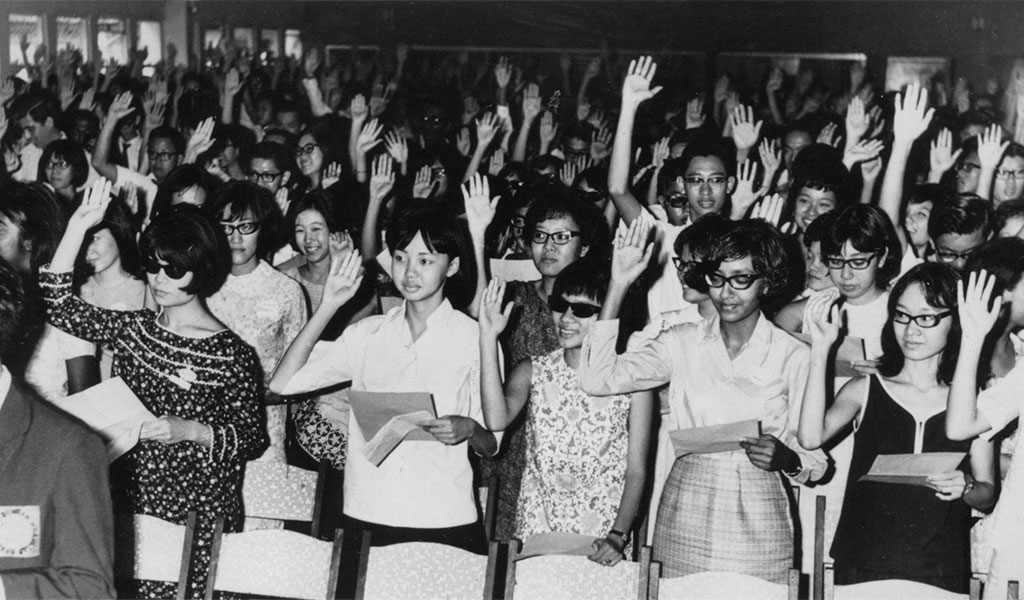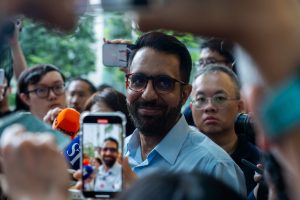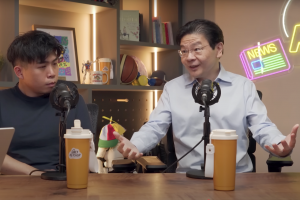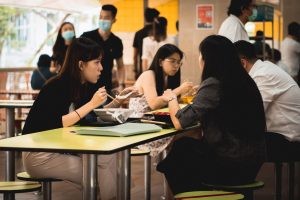On 28 March, 2009, AWARE’s Annual General Meeting saw an unexpected rise in numbers: normally, around only thirty members turned up for the meeting. That day, over 100 members were in attendance, most of whom had only joined AWARE in recent months. Later, nine of the twelve seats on the executive committee were won by brand new members, dubbed the ‘new guard’. The Nine were unknown to previous AWARE volunteers.
The political, social, and cultural drama surrounding the event has since been labelled the ‘AWARE Saga’. But beyond the internal power struggles of one Non-Governmental Organisation (NGO), the saga was a milestone in contemporary political history. It alerted Singapore to the whistling of a kettle that had been boiling for many years; that continues to bubble into the present day.
A decade later, how does the saga shape our understanding of the role religion plays in modern Singapore?
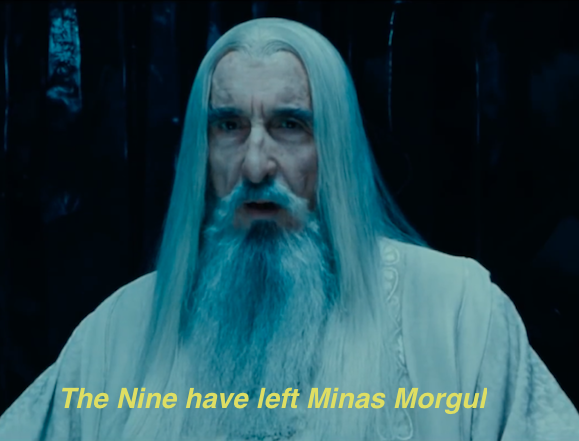
At the time, the Straits Times reported that many of the new guard had, in the past, espoused anti-homosexual views.
A series of conspicuous events soon followed: the locking mechanism at AWARE’s office was changed; long-time staff were harassed, fired, or resigned; press conferences and TV interviews broadcasted the new guard’s concern over AWARE’s supposed promotion of lesbianism.
Clearly, this was no benign coincidence. It was an unwelcome takeover, designed to steer this prominent advocacy group down a more culturally conservative path.
AWARE’s old hands (the ‘old guard’) were furious, initiating an EGM in May 2009 to decide the fate of the organisation. Days before the event, COOS pastor Derek Hong called on Christian women to support the new guard—their sisters in AWARE—by saying, “It’s not a crusade against the people [homosexuals], but there’s a line that God has drawn for us, and we don’t want our nation crossing that line.”
This was too much for the government. ISD officers visited the National Council of Churches Singapore (NCCS), and the next day, NCCS issued a statement of rebuke to the pastor.
The 7-hour EGM saw arguments, shouting, jeering, and heckling of The Nine. At the close, a vote of no confidence resulted in the new guard’s defeat, and they resigned, ending the AWARE saga.

But perhaps the best way to understand the ethos surrounding the saga is to view it against Singapore’s history of socially conservative governance.
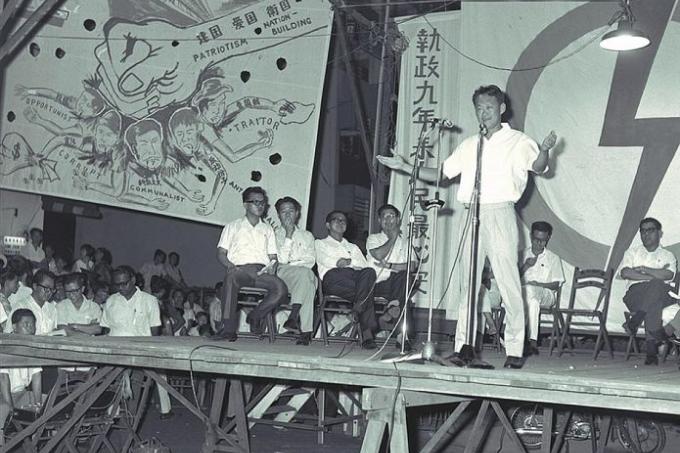
Religious influence in politics was minimal, mainly because the nation’s moral fibre was ‘safe’ in the hands of a socially conservative government.
Then, in 2003, during an interview with Time magazine, PM Goh Chok Tong said the following:
“… so let it evolve, and in time, the population will understand that some people are born that way. We are born this way and they are born that way, but they are like you and me.”
PM Goh was talking about homosexuality in Singapore. He went on to add that homosexual Singaporeans would now be allowed to take up ‘sensitive positions’ in the civil service.
The government had begun humming a different tune; daring to suggest that homosexuality would someday be normalised. Moral conservatives were spooked.
Enter Minister Mentor Lee Kuan Yew, in 2007 (The Straits Times, April 23): “We will let others take the lead … stay one step behind the front line of change.”
The message was clear: the government was abdicating their role as the Guardians of the Conservative Morals, content to let society take the lead—a mantle that was taken up, in the public sphere, by rights groups like AWARE.
AWARE-organised events, like a lesbian-friendly Mother’s Day in 2006, and a lesbian film screening in 2007, demonstrated just how inclusive these rights groups would be. These same events would go on to be singled out in press conferences and interviews by the ‘new guard’ as key moments that spurred them to initiate the takeover and ‘course-correction’ of AWARE.
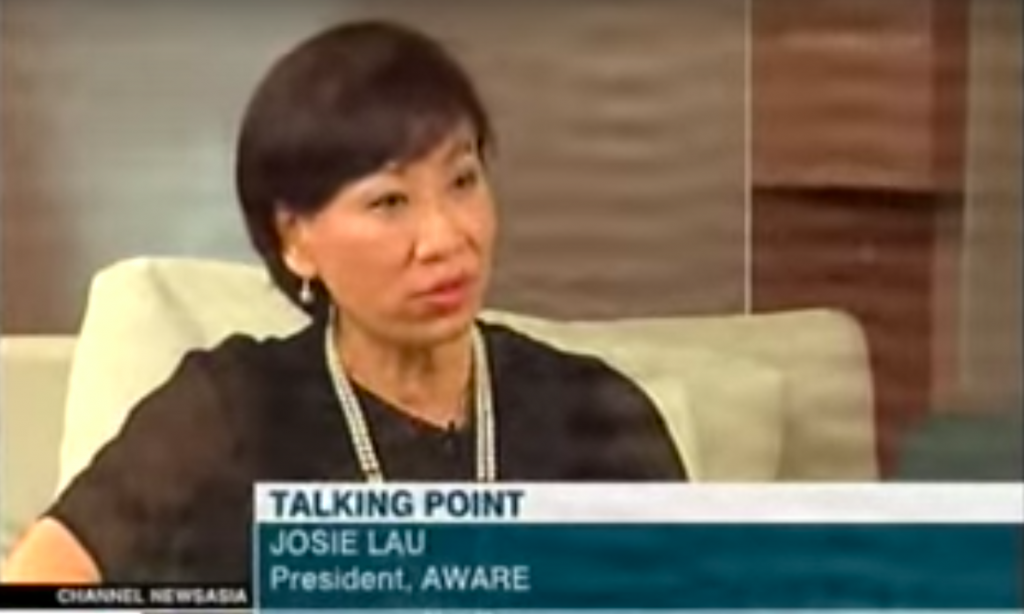
This is perhaps because, in the intervening decade, social attitudes surrounding many ‘moral’ questions appear to have shifted little. Even for those who have softened their stance, the inertia and apathy that define Singapore’s political culture has put a damper on any impetus for change.
While the existence of the LGBTQ community has become a tacitly accepted phenomenon, public support for further normalisation measures, like repealing 377A or instituting anti-discrimination laws, is nowhere near critical mass.
Last year, a petition to repeal article 377A gathered four thousand signatories; a counter-petition received four times as many (barring allegations of spam and ‘fake’ accounts). Additionally, a 2018 poll conducted by Ipsos Public Affairs (IPA), an independent market research company, shows that while only 55% of Singaporeans support the law criminalising gay sex, a mere 12% oppose it, revealing a deep well of indifference towards normalising homosexuality in Singapore.
While by no means a comprehensive referendum, such measurements are a litmus test for prevailing social attitudes. In short, it seems we require no correction, because we appear to be staying the morally conservative course
Beyond this singular issue, the saga also called attention to the broader role of religion in civil society.
Generelly, public space in Singapore is shared between all religious and secular groups, each voicing their own opinions. It was (and still is) perfectly acceptable for a person or group’s position on regulations, public policies, and the like to be informed by their religion.
However, behaviours like proselytising and religious lobbying continue to be sticky subjects in Singapore’s public domain. In a nation with a history of inter-religious conflict, whether real or perceived, maintenance of separation between religion and public spaces has always been important—which is problematic if one group interprets their religious scriptures as a commandment to convert and overtly influence the masses.
Such an interpretation of religion—as activist and intrusionary—was roundly criticised in the wake of the AWARE saga, both by other secular organisations as well as many members of the Christian community, evident in NCCS’ response to Pastor Hong’s mildly incendiary sermon in the midst of the saga.
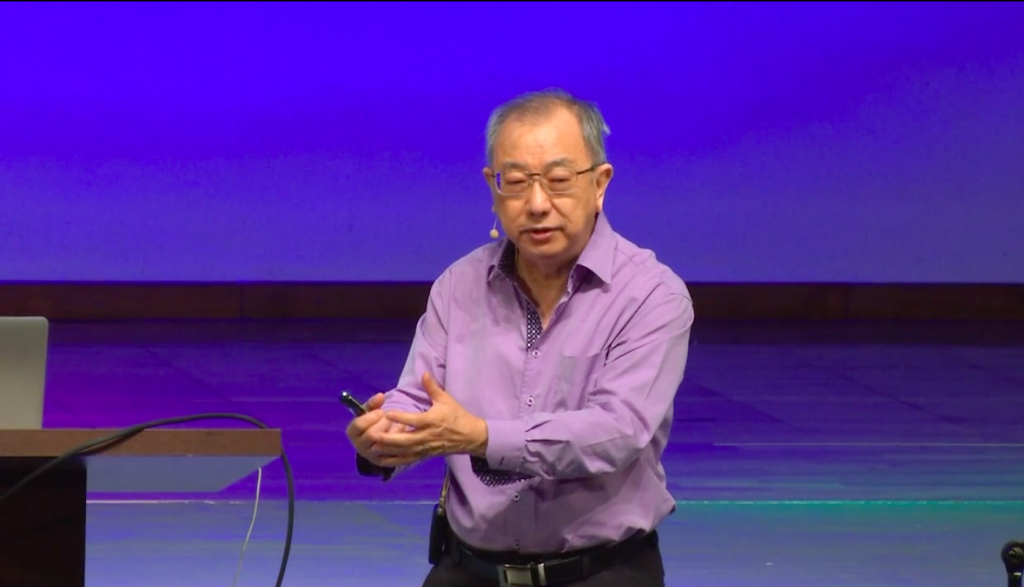
Many Christians—even those who agreed that Watain was dangerous, harmful, offensive, and ban-worthy—were uncomfortable with the conspicuousness of the religious activism and subsequent cancellation of the concert. They would have preferred that the concert be allowed to go on, sparing their personal faith from involvement and interrogation in the ensuing public fracas.
In this way, religion’s role in the civic arena is still shaped by the public shaming that some of its adherents (The Nine) received a decade ago by taking over a non-religious organisation. However, as proven by the Watain petition, the proliferation of internet access has added a new cyber-dimension to the public domain; a dimension where loud, active voices echo further than in the traditional media of yore.
In this new era, one does not have to take over AWARE to make the news. A computer, keyboard, and change.org account are all they need.
Ultimately, however, the end result of this activism/action/inaction/inadequate action is decided by the largest stakeholder in Singapore society: the government. Like a supermassive black hole, the centralised government leaves an impression so large in the social fabric of Singapore that every individual, religious and secular group is sucked into the whorling orbit.
In the wake of the AWARE saga, Prime Minister Lee Hsien Loong made the following comments at 2009’s National Day rally, explaining the government’s choice to intervene in the events that took place (sentences were selected from a longer speech):
“We hold the ring so that all groups can practice their faith freely without colliding … [Our common space] has to be neutral and secular because that’s the only way all of us can feel at home in Singapore … [The saga] risked a broader spillover into relations between different religions.”
These comments elucidate the three principles that govern the government (cough cough) on matters of religious sensitivity.
Firstly, the government is always in charge; the ‘We’ at the start of our national pledge does not mean ‘we, the people of Singapore’, but ‘we, the government elected by the people of Singapore’. The government’s role is to be the ultimate arbiter of the public sphere, no questions asked.
Secondly, the government’s intervention is always secular, not religious. Often, however, this manifests in the protection of non-secular religious considerations; this is because the government has a secular desire to maintain public order by not allowing religious groups to get too worked up over religious considerations, so it tacitly accedes to these beliefs.
Thirdly, and perhaps most importantly, the government only chooses to intervene when any given conflict becomes a clash between different religions. This indicates that the government does not see a need to intervene on behalf of secular groups. In the case of the AWARE saga, perhaps the government feared that it was generating anti-Christian sentiment, and a possible resurgence of that sentiment amongst other religious groups, therefore decided to step in.
“The picture is of primarily Malay young men—I think they went to the concert, got angry, they are all showing the one-finger sign.”
At the time, many were confused as to why an unrelated group was name-dropped. In hindsight, insofar as the government posits that Malay ≈ Muslim, it is likely that the faintest shadow of inter-religious tension (real or imagined), crystallised in that photograph, is what spooked the government into banning Watain—the same fear that prompted its intervention in the AWARE saga a decade prior.
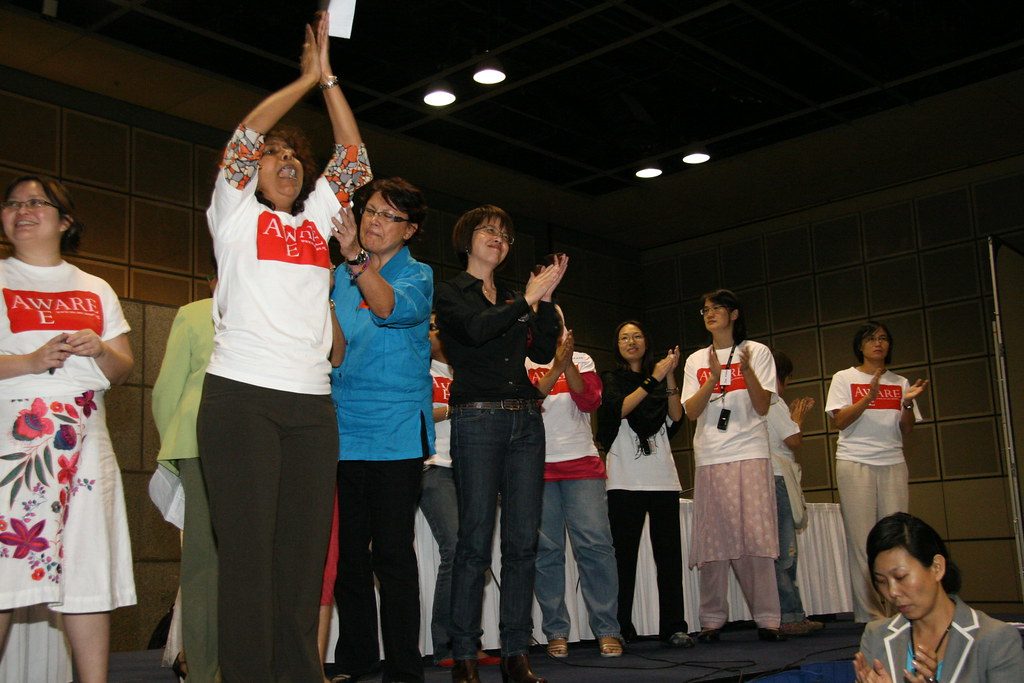
But if the AWARE saga has taught us anything, its that more voices does not equal more unity. Rather, when given a platform, voices are easily wielded to undermine and weaken.
After all, the AWARE new guard may have failed in their takeover, but they successfully influenced MOE to remove AWARE’s Comprehensive Sexuality Education (CSE) for acknowledging the existence of pre-marital sex and homosexuality.
In moving the national conversation forward, the most palpable lessons from the AWARE saga remain: disagree, but respect; argue, but seek consensus.
Stray from the course, and kor kor will make sure to set you straight again.

